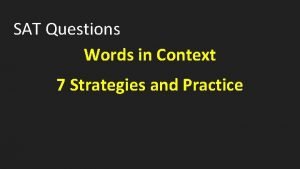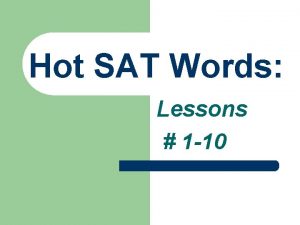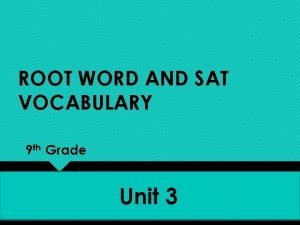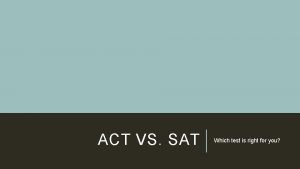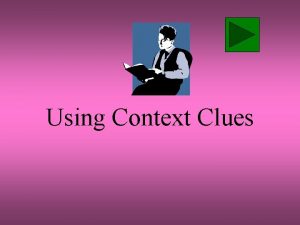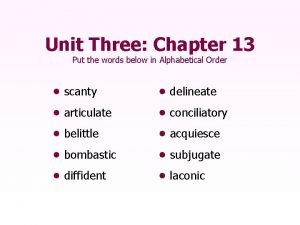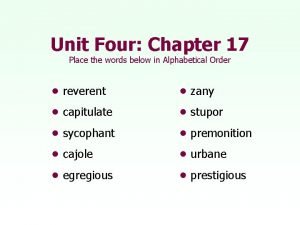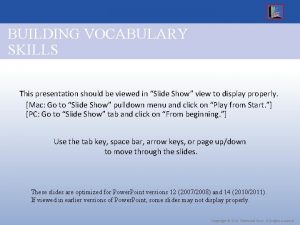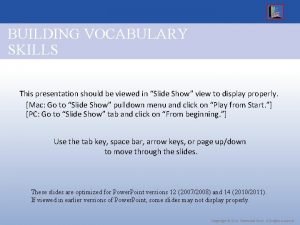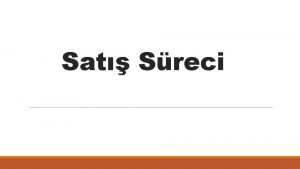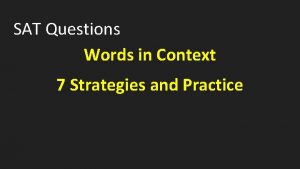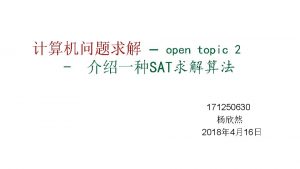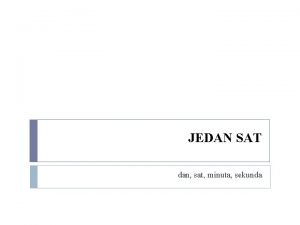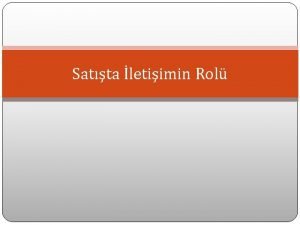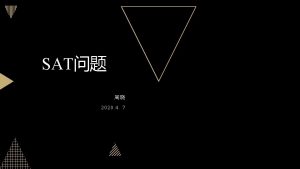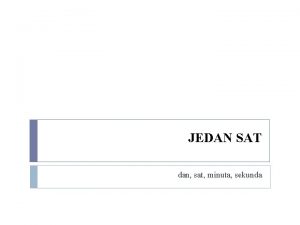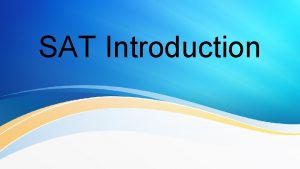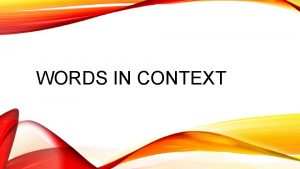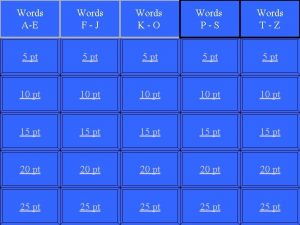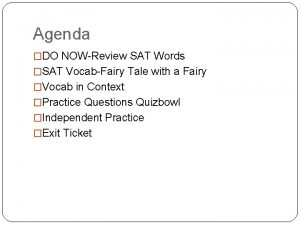SAT Questions Words in Context 7 Strategies and














- Slides: 14

SAT Questions Words in Context 7 Strategies and Practice

Strategy 1: Consider Contextual Evidence Read the sentence first, and then again, putting a “blank” where the underlined word is. At the very least, look in the previous and following sentences for hints regarding the author’s intended meaning.

Strategy 2: Cover Answer Choices It can be very distracting and use up more time if you consider the answer choices too early. Since the words tested will often be commonly used words with several different meanings, the answer choice will often be written in ways that can easily confuse you because you have most likely seen the indicated word used in a variety of contexts.

Strategy 3: Create a General Synonym Before looking at the choices given, replace the “blank” with your own general synonym. This can be broad or vague or simplified--don’t worry too much about that. Instead, use this exercise to make sure you have some idea of the intended meaning before you jump into the answer choices given. This tool will be particularly useful in eliminating other or opposite meanings within the choices, and save you time.

Strategy 4: Process of Elimination Uncover the choices and eliminate those answers that sound nothing like your synonym. If there is a word you are not familiar with, leave it open for further consideration. You never want to negate an answer just because you don’t know the definition of it. Likewise, if you get it down to a choice you are familiar with but is only “sort of right, ” and a choice that sounds appropriate but it is unknown to you, you should go with the unfamiliar word since it has the potential to be 100% correct.

Strategy 5: Read the Sentence with the Remaining Choices The new format is not only going to test vocabulary, but usage as well. Especially when you cannot decide between two answers, reading the sentence with the answer choice replacing the original word(s) can often clear it up for you. It allows you to consider the meaning, but also the hear the sentence and decide if the usage is proper. Certainly, if the author is using a verb and you replace it with a noun that has a related meaning, mouthing the sentence out silently will help you notice that mistake.

Strategy 6: Pick Your Answer Based on Meaning Students make two common mistakes on these types of word choice problems. First, without covering their answers and creating a general synonym, they jump to “matching” words, or those that are associated with the underlined word, but don’t fit the meaning of the sentence. Second, without paying attention to their own synonym, they become distracted by words that “make sense” in the sentence, but change the meaning of the indicated word. It is not enough to match words with their definitions, as the words tested will often derive their meaning from the contexts in which they are used. Additionally, it is not enough to pick a word that is logical in the sentence; it has to make sense and fit the meaning of the underlined word.

Strategy 7: Read, Read In the previous format, it made sense to study hundreds of obscure vocabulary words and hope that you would come upon the same rare, specialized language on the test. However, the new format is designed to test practical and widely used words that will continue to come up in college and/or your career. So, you can help yourself dramaticallyand for the test and life more generally-when you become familiar with these words and the ways they are used. Start with newspapers, magazines, and scholarly journals.

Practice

The vacation had the opposite effect on Jim. He despised the upcoming days and was depressed at the thought of his recent break-up. Although he marched into work fifteen minutes early on Monday morning, he was feeling blue. Remember don’t look at answer choices, consider context clues and replace with your own synonym. What words in the passage provide clues as to what the author’s intended meaning is when he says “he was feeling blue? ”

Answer Choices A. Energetic B. Dispirited C. Indigo D. Rejuvenated Now eliminate the answer choices you know don’t fit, and narrow your choices to what best matches your synonym. Remember to use the remaining words in the sentence to test if it fits the author’s intended meaning. Choose answer based on meaning.

Answer B. Dispirited

To celebrate getting a new job at a law office, Mike decided to spend time with his family. They all went to the park and had a cookout. Mike had a youthful nature and loved playing with his nieces and nephews on the jungle gym. Remember don’t look at answer choices, consider context clues and replace with your own synonym. What words in the passage provide clues as to what the author’s intended meaning is when the narrator describes “Mike has a youthful nature…”.

Answer Choices A. Environment B. Humor C. Personality D. Structure Now eliminate the answer choices you know don’t fit, and narrow your choices to what best matches your synonym. Remember to use the remaining words in the sentence to test if it fits the author’s intended meaning. Choose answer based on meaning.
 Sat words in context
Sat words in context Example of presupposition
Example of presupposition High context vs low context culture ppt
High context vs low context culture ppt Communicating across generational differences
Communicating across generational differences Verbal adalah
Verbal adalah 100 sat vocabulary words
100 sat vocabulary words Hot sat
Hot sat Sat root words
Sat root words How many questions are on the sat
How many questions are on the sat Sat warm up questions
Sat warm up questions Signal words for synonym context clues
Signal words for synonym context clues Meaning of articulate
Meaning of articulate Reverent
Reverent Chapter 16 sentence check 2
Chapter 16 sentence check 2 Chapter 13 ten words in context sentence check 2 answers
Chapter 13 ten words in context sentence check 2 answers
